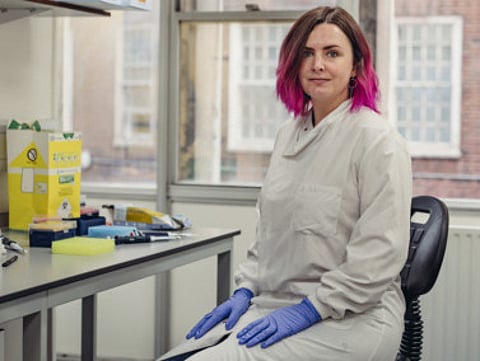What is the role of pesticides in spread of superbug?
C. auris may have benefited from the heavy use of fungicides

As the Centres for Disease Control and Prevention (CDC) works to limit the spread of drug-resistant Candida auris (C. auris), its investigators have been trying to answer the vexing question: Where in the world did it come from?
The first time doctors encountered C. auris was in the ear of a woman in Japan in 2009 (auris is Latin for ear). It seemed innocuous at the time, a cousin of common, easily treated fungal infections.
Three years later, it appeared in an unusual test result in the lab of Dr Jacques Meis, a microbiologist in Nijmegen, the Netherlands, who was analysing a bloodstream infection in 18 patients from four hospitals in India. Soon, new clusters of C. auris seemed to emerge with each passing month in different parts of the world.
The CDC investigators theorised that C. auris started in Asia and spread across the globe. But when the agency compared the entire genome of auris samples from India and Pakistan, Venezuela, South Africa and Japan, it found that its origin was not a single place, and there was not a single auris strain.
The genome sequencing showed that there were four distinctive versions of the fungus, with differences so profound that they suggested that these strains had diverged thousands of years ago and emerged as resistant pathogens from harmless environmental strains in four different places at the same time.
“Somehow, it made a jump almost seemingly simultaneously, and seemed to spread and it is drug resistant, which is really mind-boggling,” Dr. Vallabhaneni said.
There are different theories as to what happened with C. auris. Dr Meis, the Dutch researcher, said he believed that drug-resistant fungi were developing thanks to heavy use of fungicides on crops.
Dr Meis became intrigued by resistant fungi when he heard about the case of a 63-year-old patient in the Netherlands who died in 2005 from a fungus called Aspergillus. It proved resistant to a front-line antifungal treatment called itraconazole. That drug is a virtual copy of the azole pesticides that are used to dust crops the world over and account for more than one-third of all fungicide sales.
A 2013 paper in Plos Pathogens said that it appeared to be no coincidence that drug-resistant Aspergillus was showing up in the environment where the azole fungicides were used. The fungus appeared in 12 per cent of Dutch soil samples, for example, but also in “flower beds, compost, leaves, plant seeds, soil samples of tea gardens, paddy fields, hospital surroundings, and aerial samples of hospitals.”
Dr Meis visited the CDC last summer to share research and theorise that the same thing is happening with C. auris, which is also found in the soil: Azoles have created an environment so hostile that the fungi are evolving, with resistant strains surviving.
This is similar to concerns that resistant bacteria are growing because of excessive use of antibiotics in livestock for health and growth promotion. As with antibiotics in farm animals, azoles are used widely on crops.
“On everything — potatoes, beans, wheat, anything you can think of, tomatoes, onions,” said Dr. Rhodes, the infectious disease specialist who worked on the London outbreak. “We are driving this with the use of antifungicides on crops.”
Dr Chiller theorises that C. auris may have benefited from the heavy use of fungicides. His idea is that C. auris actually has existed for thousands of years, hidden in the world’s crevices, a not particularly aggressive bug. But as azoles began destroying more prevalent fungi, an opportunity arrived for C. auris to enter the breach, a germ that had the ability to readily resist fungicides now suitable for a world in which fungi less able to resist are under attack.
The mystery of C. auris’s emergence remains unsolved, and its origin seems, for the moment, to be less important than stopping its spread.
Resistance and denial
For now, the uncertainty around C. auris has led to a climate of fear, and sometimes denial.
Last spring, Jasmine Cutler, 29, went to visit her 72-year-old father at a hospital in New York City, where he had been admitted because of complications from a surgery the previous month.
When she arrived at his room, she discovered that he had been sitting for at least an hour in a recliner, in his own feces, because no one had come when he had called for help to use the bathroom. Ms. Cutler said it became clear to her that the staff was afraid to touch him because a test had shown that he was carrying C. auris.
“I saw doctors and nurses looking in the window of his room,” she said. “My father’s not a guinea pig. You’re not going to treat him like a freak at a show.”
He was eventually discharged and told he no longer carried the fungus. But he declined to be named, saying he feared being associated with the frightening infection.
Sign up for the Daily Briefing
Get the latest news and updates straight to your inbox


